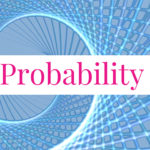Interchangeability of Limits and Probability of Increasing or Decreasing Sequence of Events

Problem 744
A sequence of events $\{E_n\}_{n \geq 1}$ is said to be increasing if it satisfies the ascending condition
\[E_1 \subset E_2 \subset \cdots \subset E_n \subset \cdots.\]
Also, a sequence $\{E_n\}_{n \geq 1}$ is called decreasing if it satisfies the descending condition
\[E_1 \supset E_2 \supset \cdots \supset E_n \supset \cdots.\]
When $\{E_n\}_{n \geq 1}$ is an increasing sequence, we define a new event denoted by $\lim_{n \to \infty} E_n$ by
\[\lim_{n \to \infty} E_n := \bigcup_{n=1}^{\infty} E_n.\]
Also, when $\{E_n\}_{n \geq 1}$ is a decreasing sequence, we define a new event denoted by $\lim_{n \to \infty} E_n$ by
\[\lim_{n \to \infty} E_n := \bigcap_{n=1}^{\infty} E_n.\]
(1) Suppose that $\{E_n\}_{n \geq 1}$ is an increasing sequence of events. Then prove the equality of probabilities
\[\lim_{n \to \infty} P(E_n) = P\left(\lim_{n \to \infty} E_n \right).\]
Hence, the limit and the probability are interchangeable.
(2) Suppose that $\{E_n\}_{n \geq 1}$ is a decreasing sequence of events. Then prove the equality of probabilities
\[\lim_{n \to \infty} P(E_n) = P\left(\lim_{n \to \infty} E_n \right). \]
 Add to solve later
Add to solve later
Sponsored Links
Proof.
Proof of (1)
Let $\{E_n\}_{n \geq 1}$ be an increasing sequence of events. Then we define new events $F_n$ as follows.
\begin{align*}
F_1 &= E_1\\
F_n & = E_n \setminus E_{n-1} && \text{ for any } n \geq 2
\end{align*}
The event $F_n$ is depicted as a yellow region in the figure below.

From the figure, we can see that the events $\{F_n\}_{n \geq 1}$ are mutually exclusive, that is, $F_iF_j = \emptyset$ for any $i \neq j$.
Furthermore, note that
\[\bigcup_{i=1}^n F_i = \bigcup_{i=1}^n E_i \tag{*}\]
for any $n$, and
\[\bigcup_{i=1}^{\infty} F_i = \bigcup_{i=1}^{\infty} E_i. \tag{**}\]
Now we proceed to the main part and prove the equality
\[\lim_{n \to \infty} P(E_n) = P \left(\lim_{n \to \infty} E_n \right).\]
We start with the right-hand-side and show that it is equal to the left-hand-side.
\begin{align*}
P\left(\lim_{n \to \infty} E_i \right) &= P \left(\bigcup_{i=1}^{\infty} E_n \right) && \text{ definition of } \lim_{n \to \infty} E_n\\[6pt]
&= P \left(\bigcup_{i=1}^{\infty} F_i \right) && \text{ by } (**) \\[6pt]
&= \sum_{i=1}^{\infty} P(F_i) && \text{ by one of the axioms of probability} \\
& && \text{ with mutually exclusive events } \{F_n\}\\[6pt]
&= \lim_{n \to \infty} \sum_{i=1}^n P(F_i) \\[6pt]
&= \lim_{n \to \infty} P\left( \bigcup_{i=1}^n F_i \right) && \text{ by additivity with mutually exclusive events } \{F_n\}\\[6pt]
&= \lim_{n \to \infty} P\left(\bigcup_{i=1}^n E_i \right) && \text{ by } (*)\\[6pt]
&= \lim_{n \to \infty} P(E_n) && \text{as $\{E_n\}$ is increasing}.
\end{align*}
This proves the desired equality.
Proof of (2)
Now, we consider a decreasing sequence of events $\{E_n\}_{n\geq 1}$.
As $\{E_n\}_{n\geq 1}$ is decreasing, its complement $\{E_n^c\}_{n \geq 1}$ is increasing. Thus, by the result of part (1), we see that
\[\lim_{n \to \infty} P(E_n^c) = P \left(\lim_{n \to \infty} E_n^c \right). \tag{***}\]
By definition, we have
\[\lim_{n \to \infty} E_n^c = \bigcup_{n=1}^{\infty} E_n^c = \left(\bigcap_{n=1}^{\infty} E_n \right)^c.\]
It follows that the right-hand-side of the equality (***) becomes
\begin{align*}
P \left(\lim_{n \to \infty} E_n^c \right) &= P\left(\left(\bigcap_{n=1}^{\infty} E_n \right)^c \right)\\[6pt]
&= 1 – P\left(\bigcap_{n=1}^{\infty} E_n \right)\\[6pt]
&= 1 – P\left(\lim_{n \to \infty} E_n \right).
\end{align*}
On the other hand, the left-hand-side of the equality (***) becomes
\begin{align*}
\lim_{n \to \infty} P(E_n^c) &= \lim_{n \to \infty} \left( 1 – P(E_n) \right)\\[6pt]
&= 1 – \lim_{n \to \infty} P(E_n).
\end{align*}
Combining these results yields
\[1 – \lim_{n \to \infty} P(E_n) = 1 – P\left(\lim_{n \to \infty} E_n \right).\]
Equivalently, we have
\[\lim_{n \to \infty} P(F_n) = P\left(\lim_{n \to \infty} E_n \right),\]
which is the desired equality. This completes the proof.
 Add to solve later
Add to solve later
Sponsored Links










